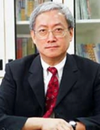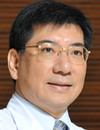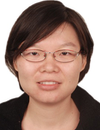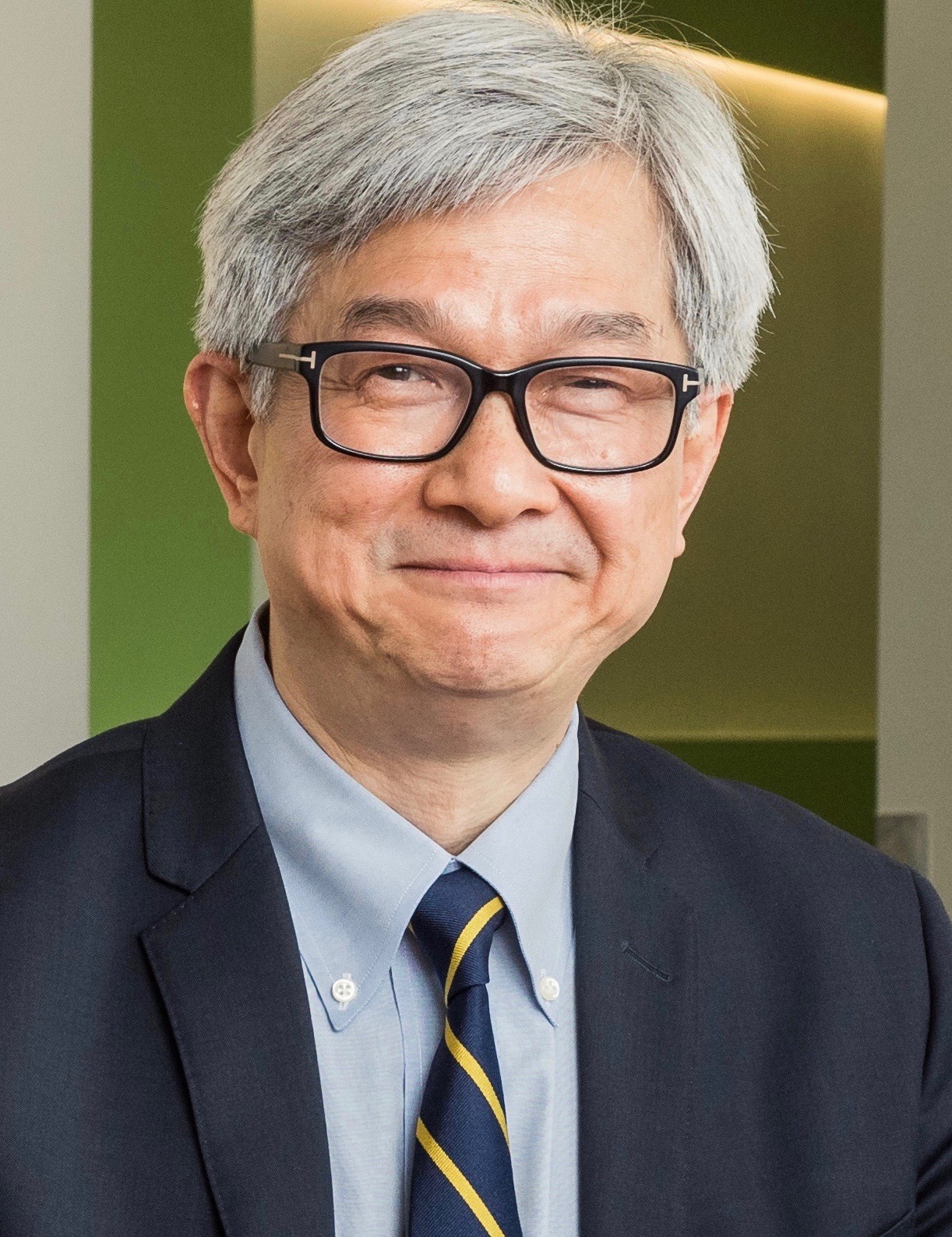
Thursday, 1 December 201608:00 | Conference Registration, Conference Materials Pick-Up, Morning Coffee, Tea and Breakfast Pastries in the Exhibit Hall | 08:40 |   | Keynote Presentation Conference Opening and Welcome from the President of Chang Gung University and President of the Taiwan Precision Medicine Society
Chia-Chu Pao, President, Chang Gung University
Ting-Chang Chang, President, Taiwan Precision Medicine Society, Taiwan
|
| |
Session Title: Conference Opening Session -- The Deployment of NGs into the Clinic: Challenges and Opportunities |
| | 09:00 |  | Keynote Presentation Lowering the Clinical Adoption Barriers of Next-Generation Sequencing
John Leite, Vice President, Product Marketing and Market Development, Oncology, Illumina, United States of America
Next-generation sequencing has demonstrated tremendous promise in significantly improving outcomes for a number of diseases and improving overall health. We will explore the remaining challenges associated with driving this technology to be a part of standard of care. |
| 09:30 |  | Keynote Presentation Identifying Non-coding RNA Biomarkers and Therapeutic Agents Through Expression Profiling and Functional Screens
Alexander Pertsemlidis, Associate Professor, The University of Texas Health Science Center at San Antonio, United States of America
To identify non-coding RNAs that regulate tumor cell viability and drug response, we have combined high-throughput screening with expression profiling by NGS and other methods. Candidate targets are validated using qRT-PCR, protein quantification, and luciferase reporter assays. The response of cancer cells to perturbations in candidate ncRNA levels is assessed through flow cytometric analysis of cell cycle phase distribution and through colony formation and caspase activation assays, and validated in mouse xenograft models. We have identified ncRNAs that have significant effects on cell viability and drug response. These ncRNAs have intrinsic value as biomarkers and therapeutic agents, and the vulnerabilities that they uncover can be targeted with pathway-specific perturbations. |
| 10:00 | Biomarker Development and Clinical Practice in Precision Medicine
Sung-Liang Yu, Professor, Department of Clinical Laboratory Sciences and Medical Biotechnology, National Taiwan University College of Medicine, Taiwan
Precision medicine is the trend of modern therapy promoted by United States President, Obama, particularly, the APPLLO Oncology Network has officially gone globally in Jul 2016. According to the cancer therapeutic strategies, we developed two lung cancer prognostic markers for chemotherapy, a 5-gene marker and a 5-microRNA marker that predict survival of patients with non-small cell lung, NSCLC and a 6-CNV marker (copy number variation) that can predict overall and disease-free survivals of patients with EGFR-activating mutation treated with EGFR-TKI. Cancer patients largely may benefit from the development of molecular target therapy and companion diagnosis. Patients avoid inappropriate treatment, adverse effects and poor life quality as well as unsatisfied survival by personalized medicine. We developed a quantification method for gene mutation by DNA mass spectrometry that can detect as low as 1% gene mutations. Based on these assays we establish an ISO15189 certificated reference Lab to provide more than 10,000 clinical services for clinical trials and translational medicine. Recently, we identified the YAP1 R331W as an allele predisposed for lung adenocarcinoma with high familial penetrance. The adjusted Odds Ratio is 6.4 after screening for 3,000 individuals. It is the first germline driver mutation found in Asia. In the middle of 2016, we carried out PT test (proficiency test) of cfDNA for T790M detection which is the first time performed in Asia. The genomic approaches are also applied for other diseases, including colorectal, gastric, ovarian cancer and leukemia. Most importantly, how to reduce the cancer incidence is the critical issue we should try to overcome in the near future. | 10:30 | Coffee and Tea Break with Light Snacks and Visit the Exhibitors | 11:15 |  Technology Spotlight: Technology Spotlight:
Bioinformatics is the Linchpin in Precision Medicine
Pei-Lung Chen, Associate Professor and Attending Physician, National Taiwan University Hospital
Next-generation sequencing (NGS) has become much more affordable, which allows clinical applications of genome-scale data. However, it is now clear that sequencing is only one perspective of a more complex story. In this presentation Dr. Pei-Lung Chen will share the experience in applying NGS to genomic medicine and clinical genetic testing. Dr. Chen will demonstrate how advanced genomics analysis promises better outcome of clinical applications as well as precision medicine.
| 11:45 |  Technology Spotlight: Technology Spotlight:
Pioneering the Path Toward Precision Oncology Through Next-Generation Sequencing
Joe Daniel, Oncology Leader - Asia Pacific and Japan, Thermo Fisher Scientific
We will discuss the design elements and rationale of our Oncomine® Assay product line in the following applications:
- Solid tumor assays for detection of SNVs, indels, CNVs, and gene fusions in a single workflow
- Liquid biopsy assays for cfDNA and CTC analysis
- Immune response assays
| 12:15 | Networking Lunch: Visit Exhibitors and Engage with Fellow Delegates | 13:30 | Translatome Analysis by NGS: Filling the Gap Between Transcriptome and Proteome Results in Biomarker Discovery
Joseph T. Tseng, Associate Professor, National Cheng-Kung University, Taiwan
Ribosome profiling or ribo-seq is a new technique that provide genome-wide information on protein synthesis in vivo, and filled the technological gap existing between our abilities to quantify the transcriptome and the proteome. The applications of ribosome profiling were used to identify the translation start sites, the distribution and the speed of translating ribosome, and to study the effects of microRNAs on translation. This technology already dramatically change our understanding of translational control. In my lab, we have successfully established and modified this technology to get a more high quality data with lower cost. And the translatome result of different kinds of colon polyps were analyzed. From the results, we identity several good biomarkers for further validation and highlight the importance of Ribo-Seq technology in biomarker discovery. | 14:00 |  | Keynote Presentation The Effect of Recent U.S. Supreme Court Rulings on Diagnostics and Precision Medicine Patents
Barbara Rudolph, Partner and IP Lawyer, Finnegan, Henderson, Farabow, Garrett & Dunner, LLP, United States of America
This presentation will focus on developments in United States patent practice. Specifically, it will focus on recent Supreme Court decisions and their effect on the patenting and enforcement of diagnostic technologies and personalized medicine, including patent subject matter eligibility and indirect infringement. The presentation will address these recent trends with a focus on the practical implications of these developments to your everyday practice. |
| 14:30 |  Technology Spotlight: Technology Spotlight:
Real World Data of ctDNA Assay with cSMART Technology for NSCLC in China
Kevin Wang, General Manager, Oncology department, Berry Genomics Corp.
We will share thousand patients’ data of ctDNA assay with cSMART technology for NSCLC. It combined the clinical treatment and molecular data. The data will point out the high sensitive and absolute quantity through cSMART technology.
| 15:00 | Coffee and Tea Break | 15:30 |  | Keynote Presentation Sensitive and Specific, Multiplex, Real-Time PCR Assays for Assessing the Abundance of Extremely Rare Mutations Associated with Cancer Diagnosis, Prognosis, and Therapy
Fred Kramer, Professor, New Jersey Medical School Rutgers University, United States of America
Real-time multiplex PCR assays are potentially the most rapid, most sensitive, and least expensive way to assess the abundance of mutant DNA fragments present in liquid biopsies; provided that a way is found to selectively amplify rare mutant fragments without amplifying abundant related wild-type fragments; and provided that the amplicons generated from different mutants that occur in the same or an adjacent codon are prevented from forming heteroduplexes that interfere with exponential amplification, obscuring the threshold values of the rarer mutants. “SuperSelective” PCR primers, due to their unique design, are extraordinarily specific, able to selectively initiate the synthesis of amplicons on ten mutant DNA fragments in the presence of 1,000,000 wild-type DNA fragments, even though the only difference between the mutant and the wild-type is a single-nucleotide polymorphism. Moreover, each SuperSelective primer that is specific for a particular mutation possesses a unique 5' tag sequence that is incorporated into the resulting amplicons and detected in real-time by differently colored molecular beacon probes. Each SuperSelective primer specific for a particular mutation also possesses a unique “bridge” sequence that assures that each primer only copies its intended amplicon, and that creates a single-stranded bubble in heteroduplexes that enables the rarest amplicons to be independently exponentially amplified. And finally, the inclusion of primers for a wild-type reference gene fragment, enables the abundance of each type of mutant DNA fragment to be assessed (without measuring the amount of DNA in the sample) by determining the difference between its threshold value and the threshold value of the reference gene. |
| 16:30 | Panel Discussion: The Engagement of Academia and Industry in Moving NGS into the Clinic and Applications
Topics Addressed:
- ctDNA studied using NGS
- NIPT
- Liquid Biopsy Development
- IP Challenges
Panelists: - John Leite, Illumina
- Barbara Rudolph, Finnegan, Henderson, Farabow, Garrett & Dunner, LLP
- Alex Pertsemlidis, UT-Health Sciences Center at San Antonio
- Hui Jiang, BGI
- Kevin Wang, Berry Genomics
- Joe Daniel, ThermoFisher Scientific
- Ting-Chang Chang, President, Taiwan Precision Medicine Society
| 17:30 | Networking Reception with Beer, Wine and Appetizers | 19:00 | Close of Day 1 of the Conference. |
Friday, 2 December 201608:00 | Morning Coffee, Tea and Breakfast Pastries and Networking in the Exhibit Hall | |
Session Title: Delivering Precision Medicine via NGS and Liquid Biopsies |
| | 09:00 |  | Keynote Presentation Why Biobanks are An Essential Core for Precision Medicine Research
Nazneen Aziz, Executive Director, Kaiser Permanente Research Bank, United States of America
Next generation sequencing (NGS), introduced in 2005, has revolutionized the personalized/precision medicine space by increasing the speed at which the genome can be sequenced at an exponentially lower cost. Within 5 years of its introduction and widespread use in research, NGS is now starting to impact the diagnostic and healthcare industry. Because it has a higher throughput and lower cost per base, NGS has been adopted into clinical testing far more rapidly than any other prior molecular technologies. The embracing of a new technology for routine diagnostics usually takes over 10 - 14 years or more. What is particularly intriguing about NGS’s rapid adoption into clinical testing is that compared to other molecular technologies it has a number of intricacies associated with its implementation that is unfamiliar to the clinical laboratory. However, despite the power of the NGS technology, advances in precision medicine cannot happen without the availability of large numbers of consented individuals whose genome is sequenced. Dr. Aziz will address the opportunities, complexities and challenges of NGS clinical testing and will discuss the important role biobanks play in the advancement of genomic medicine.
|
| 09:30 |  | Keynote Presentation Expanding the Scope of Next Generation Sequencing on Prenatal Testing
Hui Jiang, Vice President, BGI-Research, China
Next generation sequencing has been widely used to assess the risk of fetal trisomy non-invasively. It also shows the possibility to expend next generation sequencing to micro-deletion, microduplication syndrome and single gene diseases. |
| 10:00 | Recent Advances on Small RNAseq-based Circulating RNA Profiling and its Applications
Kai Wang, Principal Scientist, Institute for Systems Biology, United States of America
Circulating RNA has gained significant interest due to their potential diagnostic applications. Despite its potential, it is a challenge to accurately obtain the spectrum of circulating RNA. We made improvements on next generation sequencing based small RNA profiling. These advances will serve as the foundation of moving this promising field forward. | 10:30 | Coffee and Tea Break and Networking in the Exhibit Hall | 11:00 |  | Keynote Presentation Late-Breaking Presentation: EFIRM Liquid Biopsy (eLB)
David Wong, Felix and Mildred Yip Endowed Chair in Dentistry; Director for UCLA Center for Oral/Head & Neck Oncology Research, University of California-Los Angeles, United States of America
Liquid biopsy is a rapidly emerging field to address this unmet clinical need as diagnostics based on cell-free circulating tumor DNA (ctDNA) can be a surrogate for the tumor genome. The use of ctDNA via liquid biopsy will facilitate analysis of tumor genomics that is urgently needed for molecular targeted therapy. Currently, most targeted approaches are based on PCR and/or next generation sequencing (NGS) for liquid biopsy applications with performance concordance in the 70-80% range with biopsy-based genotyping. We have developed a liquid biopsy technology “Electric Field Induced Release and Measurement (EFIRM)- Liquid Biopsy (eLB)” provides the most accurate detection that can assist clinical treatment decisions for the most common subtype of lung cancer, non-small cell lung cancer (NSCLC), with tyrosine kinase inhibitors (TKI) that can extend the disease progress free survival period of these patients. eLB can detection ctDNA at single copy level. In addition eLB requires only 40 µl of sample volume, no sample processing, reaction time is 15min and can be performed at the point-of-care or high throughput reference lab using plasma or saliva. In two blinded independent clinical studies, eLB detects actionable EGFR mutations in NSCLC patients with >90% concordance with biopsy-based genotyping. eLB is minimally/ non-invasive detecting the most common EGFR gene mutations that are treatable with TKI such as Gefitinib or Erlotinib to effectively extend the progression free survival of lung cancer patients. eLB offers both a high throughput reference lab as well as point-of-care platform that can provide real time feedback in a physician’s office. |
| 11:30 |  | Keynote Presentation Clinical Applications of NanoVelcro Rare-Cell Assays for Detection and Characterization of Circulating Tumor Cells
Hsian-Rong Tseng, Professor, Crump Institute for Molecular Imaging, California NanoSystems Institute, University of California-Los Angeles, United States of America
Circulating tumor cell (CTC) is regarded as a liquid biopsy of tumor, allowing non-invasive, repetitive, and systemic sampling of disease. Although detecting and enumerating CTCs is of prognostic significance in metastatic cancer, it is conceivable that performing molecular and functional characterization on CTCs will reveal unprecedented insight into the pathogenic mechanisms driving lethal disease. Nanomaterial-embedded cancer diagnostic platforms, i.e., NanoVelcro CTC Assays represent a unique rare-cell sorting method that enables detection isolation, and characterization of CTCs in peripheral blood, providing an opportunity to non-invasively monitor disease progression in individual cancer patients. Over the past decade, a series of NanoVelcro CTC Assays has been demonstrated for exploring the full potential of CTCs as a clinical biomarker, including CTC enumeration, phenotyping, genotyping and expression profiling. In this presentation, Dr. Tseng will briefly introduce the development of three generations of NanoVelcro CTC Assays, and highlight the clinical applications of each generation for various types of solid cancers, including prostate cancer, pancreatic cancer, lung cancer, kidney cancer, liver cancer, and melanoma. |
| 12:00 | .jpg) Technology Spotlight: Technology Spotlight:
The New Era of Cancer Precision Treatment: NGS-based Clinical Companion Diagnostics
Chien-Hsiang Tang, R&D Director, LihPao Life Science Corp.
Precision Medicine has been an emerging approach for cancer diagnostic treatments through improvement on technology and reduction on supplies. Countless advances in Precision Medicine have already led to powerful new discoveries and treatments. Over the years, our laboratory dedicates to the research on personal genetic profiling with NGS (next generational sequencing) platform. With strong clinical practices in Taipei Veteran General Hospital, the laboratory forwards the molecular diagnostic practice to the cancer patients. Under College of American Pathologists (CAP) accredited laboratory, our current services include Colorectal Cancer (CRC), Non-Small Cell Lung Cancer (NSCLC), and Comprehensive target-drug-panels, and more beneficial servicing panels will be launched soon. Through target-drug related NGS genetic profiling, the effectiveness of medication could be greatly improved, thus, reduced the possibility of cancer reoccurrence for patients.
| 12:30 | Networking Lunch in the Exhibit Hall: Visit Exhibitors and Engage with Your Fellow Delegates | |
Session Title: Case Histories Describing the Deployment of NGS into Clinical Utility |
| | 13:30 |  Technology Spotlight: Technology Spotlight:
Development of NGS Methods Tailored For Circulating Cell-Free DNA (cfDNA)
Mengchu Wu, Director of Application Development, Personal Genomics
| 14:00 | Scalable Data Management and Analysis Infrastructure for Clinical Sequencing – From Mapping to Interpretation
Adam Yao, Research Scientist, Academia Sinica, Taiwan
There is an emerging need for data management, integration, analysis, and interpretation of data generated from NGS (next-generation sequencing) technologies. Our group consisting of a multidisciplinary team has built a scalable infrastructure capable of effectively handling the above tasks. Our infrastructure contains a bioinformatics pipeline to process NGS data, an analysis pipeline to annotate all genetic variants detected in patient samples, and a genome variant database to store known genetic variants and their clinical interpretation. This infrastructure is easily adaptable for various research settings ranging from small research labs to large sequencing centers. | 14:30 | Coffee and Tea Break and Networking in the Exhibit Hall | 15:00 | Use of High-Throughput Sequencing for Disease Gene Discovery: the Path from Helix to Health
Wen-Hung Chung, Director, Whole-Genome Research Core Laboratory of Human Diseases, Chang Gung Memorial Hospital, Taiwan
Although array-based genotyping methods for common variants have thus far succeeded in explaining a modest fraction of the genetic components of human diseases, recent advances in next-generation sequencing (NGS) technologies have rapidly facilitated substantial progress. This outcome is expected because NGS can directly identify the causal variants whereas chip-based platforms generally only capture a few percent of the estimated heritability for these diseases. With further developments in sequencing technologies for data acquisition and more effective tools for data analysis and clinical extraction, NGS now becomes technically feasible to search for Mendelian disease genes in an unbiased manner with strategies that depends on the availability of well-phenotyped patients and family members. Here, we show our attempts to uncover novel disease-causing mutations for rare hereditary diseases (e.g. hereditarily cutaneous diseases, rare neurological diseases, and inherited pediatric conditions) by whole-genome or whole-exome sequencing. In particular, we apply a more comprehensive approach to detect rare variants that contribute considerably to these conditions. Through unveiling the genetic basis of these disorders and the identification of new genes and pathways, a better understanding of disease pathogenesis is obtained, ultimately leading to the development of therapeutic strategies and accurate prediction of clinical outcome. | 15:30 | Application of Next-Generation Sequencing on Pre-implantation Genetic Screening
H. Sunny Sun, Director/Professor, Institute of Molecular Medicine, College of Medicine; Director, Center for Genomic Medicine, National Cheng Kung University Taiwan, Taiwan
| 16:00 | Close of Conference |
|

 Add to Calendar ▼2016-12-01 00:00:002016-12-02 00:00:00Europe/LondonNext Generation Sequencing Asia 2016: Clinical ApplicationsNext Generation Sequencing Asia 2016: Clinical Applications in Taipei, TaiwanTaipei, TaiwanSELECTBIOenquiries@selectbiosciences.com
Add to Calendar ▼2016-12-01 00:00:002016-12-02 00:00:00Europe/LondonNext Generation Sequencing Asia 2016: Clinical ApplicationsNext Generation Sequencing Asia 2016: Clinical Applications in Taipei, TaiwanTaipei, TaiwanSELECTBIOenquiries@selectbiosciences.com